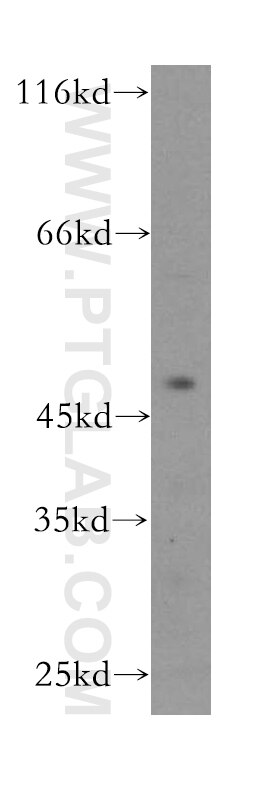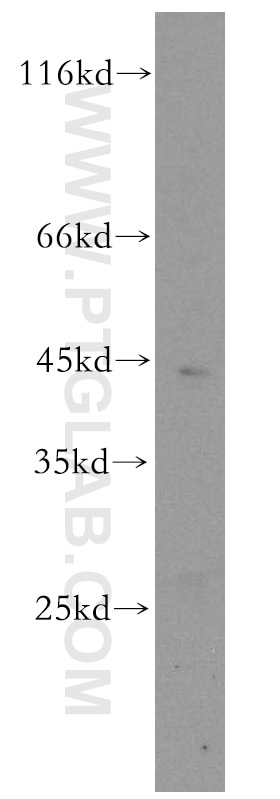- Phare
- Validé par KD/KO
Anticorps Polyclonal de lapin anti-CENPL
CENPL Polyclonal Antibody for WB, ELISA
Hôte / Isotype
Lapin / IgG
Réactivité testée
Humain, rat, souris
Applications
WB, ELISA
Conjugaison
Non conjugué
N° de cat : 17007-1-AP
Synonymes
Galerie de données de validation
Applications testées
| Résultats positifs en WB | cellules PC-3, cellules Raji |
Dilution recommandée
| Application | Dilution |
|---|---|
| Western Blot (WB) | WB : 1:500-1:2400 |
| It is recommended that this reagent should be titrated in each testing system to obtain optimal results. | |
| Sample-dependent, check data in validation data gallery | |
Applications publiées
| KD/KO | See 1 publications below |
| WB | See 2 publications below |
Informations sur le produit
17007-1-AP cible CENPL dans les applications de WB, ELISA et montre une réactivité avec des échantillons Humain, rat, souris
| Réactivité | Humain, rat, souris |
| Réactivité citée | Humain |
| Hôte / Isotype | Lapin / IgG |
| Clonalité | Polyclonal |
| Type | Anticorps |
| Immunogène | CENPL Protéine recombinante Ag10703 |
| Nom complet | centromere protein L |
| Masse moléculaire calculée | 390 aa, 44 kDa |
| Poids moléculaire observé | 48 kDa |
| Numéro d’acquisition GenBank | BC033154 |
| Symbole du gène | CENPL |
| Identification du gène (NCBI) | 91687 |
| Conjugaison | Non conjugué |
| Forme | Liquide |
| Méthode de purification | Purification par affinité contre l'antigène |
| Tampon de stockage | PBS with 0.02% sodium azide and 50% glycerol |
| Conditions de stockage | Stocker à -20°C. Stable pendant un an après l'expédition. L'aliquotage n'est pas nécessaire pour le stockage à -20oC Les 20ul contiennent 0,1% de BSA. |
Protocole
| Product Specific Protocols | |
|---|---|
| WB protocol for CENPL antibody 17007-1-AP | Download protocol |
| Standard Protocols | |
|---|---|
| Click here to view our Standard Protocols |
Publications
| Species | Application | Title |
|---|---|---|
Int J Biochem Cell Biol CENPL accelerates cell proliferation, cell cycle, apoptosis, and glycolysis via the MEK1/2-ERK1/2 pathway in hepatocellular carcinoma
| ||
Cell Signal E2F8-CENPL pathway contributes to homologous recombination repair and chemoresistance in breast cancer |



